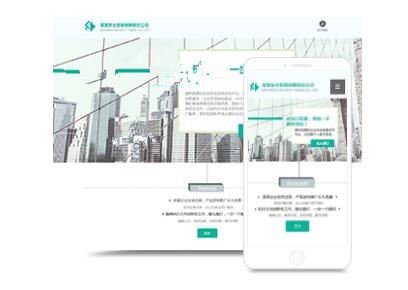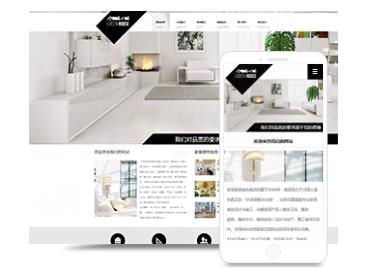首先,将下面的代码添加到您的当前主题的functions.php文件中:
function bg_recent_comments($no_comments= 5,$comment_len= 80,$avatar_size= 48){
$comments_query= new WP_Comment_Query();
$comments=$comments_query->query( array('number'=>$no_comments));
$comm='';
if($comments): foreach($commentsas$comment):
$comm.='<li>'. get_avatar($comment->comment_author_email,$avatar_size);
$comm.='<a class="author" href="'. get_permalink($comment->post_ID).'#comment-'.$comment->comment_ID.'">';
$comm.= get_comment_author($comment->comment_ID).':</a>';
$comm.='<p>'. strip_tags( substr( ***ly_filters('get_comment_text',$comment->comment_content), 0,$comment_len)).'</p></li>';
endforeach; else:
$comm.='No comments.';
endif;
echo$comm;
}
您可以在**行设置适合你的评论条数,*长评论字数限制,以及gravatar头像尺寸长度等等。
然后,添加下面的代码到您想要显示*近的评论在您的WordPress主题的任何位置(如何在文本小工具运行PHP,比如下面的代码,请参考:):
<div class="widget recent-comments">
<h3>Recent Comments</h3>
<?php bg_recent_comments();?>
</div>
*后你也可以添加下面的CSS到你的style.css文件中:
.recent-comments{ list-style: none; font-size: 12px; color:#485358;}
.recent-comments li{ overflow: hidden; padding: 20px 0; border-***: 1pxdotted#DADEE1;}
.recent-comments li:first-child{ border: 0 none;}
.recent-comments img{ float: left; margin-right: 8px;}
.recent-comments a{ display: block; margin-***: 10px; padding-***: 10px;}
帮你修改后的代码,浏览数1000起步,没测试过,你可以试试。代码已经帮你注释了,希望可以帮你理解。如果有帮助请采纳,谢谢。
/*显示文章浏览次数*/
functiongetPostViews($postID){
$count=get_post_meta($postID,'views',true);//获取浏览数
if($count==''){//如果获取到的是空的
delete_post_meta($postID,'views');
add_post_meta($postID,'views','1000');//创建自定义字段
return"1000";//打印
}
return$count.'';
}
functionsetPostViews($postID){
$count=get_post_meta($postID,'views',true);//获取浏览数
if($count==''){//如果获取到的是空的
$count=1000;
delete_post_meta($postID,'views');

add_post_meta($postID,'views','1000');//创建自定义字段
}else{
$count++;//浏览数+1
update_post_meta($postID,'views',$count);//更新自定义字段
}
}
/p>
p style="text-indent:2em;">**步:在后台主题管理的index.PHP文件中找到显示全文的函数:
/p>
p style="text-indent:2em;">第二步:这个代码所属div层作用是显示该文摘或文章全文。比如曲豆的该层代码是:
/p>
p style="text-indent:2em;">将它们替换为:
/p>
p style="text-indent:2em;">或替换为:
/p>
p style="text-indent:2em;">第三步:以上方法显示wordpress摘要,其中的<?php the_excerpt();?>显示摘要函数。在编辑发表文章时仍然需要点击编辑器上那个”split post with more tag”按钮(快捷方式是Alt+t)。
/p>
p style="text-indent:2em;">那么如何让wordpress分类列表页只显示文章的标题列表?其实很简单:直接把这个层里代码都删掉,只留下:
/p>
p style="text-indent:2em;">在WordPress系统中,默认的首页和目录页使用的书全文输出,这对于文章内容较长的*客来说很不方面,下面我介绍一个方法,可以简单的实现在WordPress首页和目录页显示摘要而非全文。
/p>
p style="text-indent:2em;">首先找到wp-content/themes下你使用的模板目录,查找目录中的文件,如果有home.php则修改home.php,没有的话就修改index.php,找到<?php the_content();?>这一行,将其修改为以下代码:
/p>
p style="text-indent:2em;"><?php if(is_category()|| is_archive()|| is_home()){
/p>
p style="text-indent:2em;">the_excerpt();
/p>
p style="text-indent:2em;">} else{
/p>
p style="text-indent:2em;">the_content('Read the rest of this entry»');
/p>
p style="text-indent:2em;">}?>
/p>
p style="text-indent:2em;"><div class="details"><div class="inside"><?php comments_popup_link('No Comments','1 Comment','% Comments');?> so far|<a href="<?php the_permalink()?>">Read On»</a></div></div>
/p>
p style="text-indent:2em;">这时,你的WordPress首页和分类就显示为摘要信息而不是全文信息了。
/p>
p style="text-indent:2em;">这段代码可以在你的首页、存档页、目录页使用摘要输出,使用摘要输出后,整个WordPress的重复内容就少多了,很利于搜索引擎优化。
/p>
p style="text-indent:2em;">如用户不想修改代码,可以安装使用这个插件来实现首页摘要显示的功能。
/p>
p style="text-indent:2em;">英文版:WordPress Excerpt Seo Tips
/p>

在WordPress系统中,默认的首页和目录页使用的书全文输出,这对于文章内容较长的*客来说很不方面,下面我介绍一个方法,可以简单的实现在WordPress首页和目录页显示摘要而非全文。 首先找到wp-content/themes下你使用的模板目录,查找目录中的文件,如果有home.php则修改home.php,没有的话就修改index.php,找到<?php the_content();

1、文章URL链接结构的优化 Permalink里面要包含postname.一般的服务器都支持mod_rewrite功能,使用这个功能可以优化Permalink(**链接),在Option-Permalink里的Common options里进行设置,我比较倾向于使用/%year%/%monthnum%/%postname%.html这种链接结构,一来链接目录只有两级,利于索引

以下是WordPress建站的基本流程: 注册域名和购买主机:域名是网站的**地址,而主机是存储网站文件和数据的服务器。选择并注册一个适合网站的域名(例如Gname),并购买可靠的主机服务(例如RAKsmart)。 安装WordPress:许多主机提供商都有简化的一键安装过程,通过主机提供商的控制面板或手动安装,将WordPress软件安装到主机上,使安装变得更加简单。 选择合适的主题

wordpress图片不保存到postsWordPress是一个以*客为主的内容管理系统,用于创建网站和*客。在WordPress中添加和管理图片是非常重要的功能,因为图像可以使内容更具吸引力和易读*。 如果你正面临着WordPress图片不保存到Posts的问题,请尝试以下几个解决方法: 1.检查文件夹权限 WordPress将上传的图像保存在wp-content/uploads目录下。所以